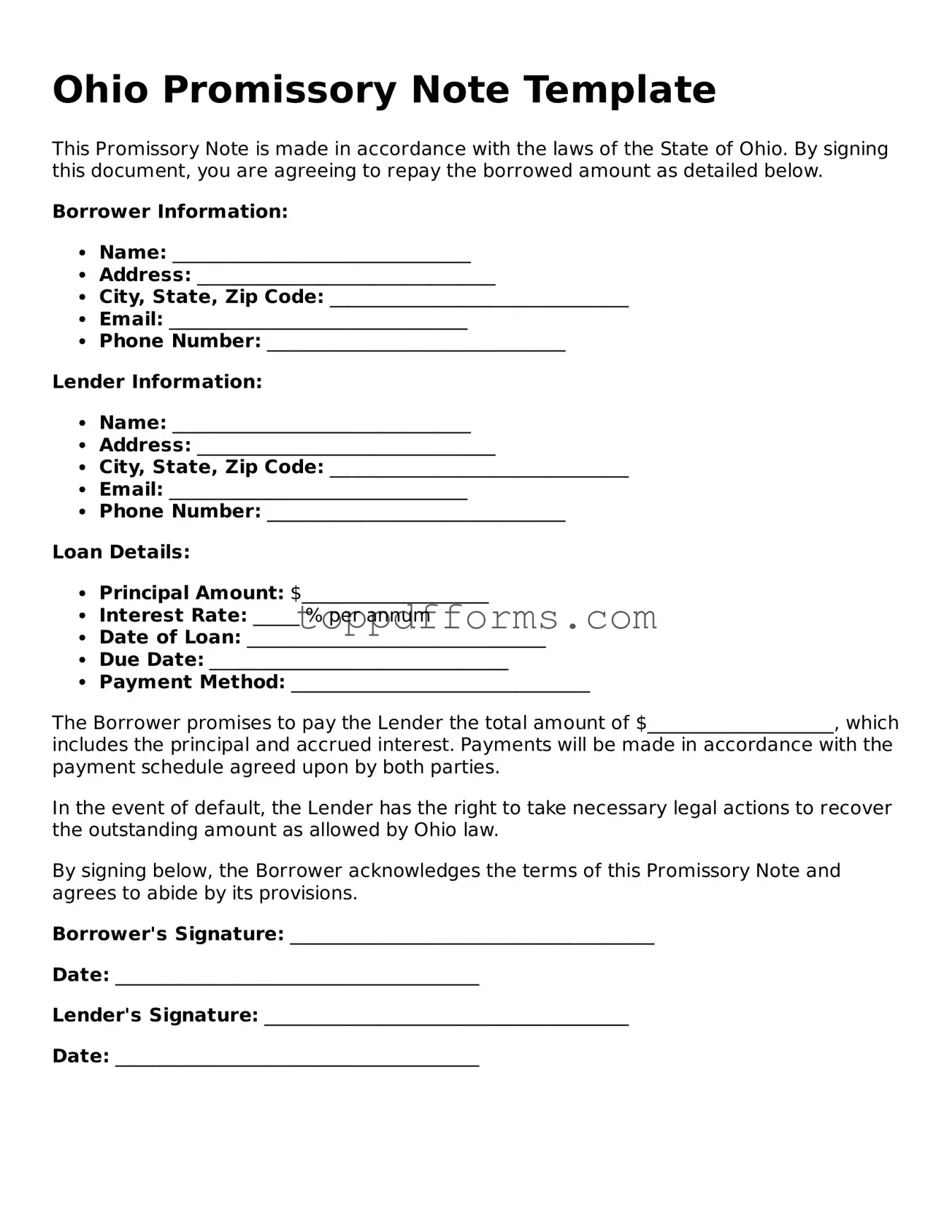What is a promissory note in Ohio?
A promissory note is a written promise to pay a specific amount of money to a designated person or entity at a defined time or on demand. In Ohio, this document serves as a legal agreement between the borrower and the lender. It outlines the terms of the loan, including the amount borrowed, interest rate, payment schedule, and any penalties for late payments. This note is crucial for both parties as it provides clarity and legal protection.
How do I create a promissory note in Ohio?
Creating a promissory note in Ohio is straightforward. You need to include essential details such as the names of the borrower and lender, the loan amount, the interest rate, and the repayment terms. It’s also advisable to specify what happens if the borrower defaults. While you can draft the note yourself, using a template or consulting a legal professional can help ensure that it meets all necessary requirements.
Is a promissory note legally binding in Ohio?
Yes, a promissory note is legally binding in Ohio as long as it contains the necessary elements. These include an offer, acceptance, and consideration (the money being loaned). Once both parties sign the document, it becomes enforceable in court. If the borrower fails to repay, the lender can take legal action based on the terms outlined in the note.
Do I need to notarize a promissory note in Ohio?
Notarization is not required for a promissory note to be valid in Ohio. However, having the note notarized can add an extra layer of protection. It serves as proof that both parties signed the document willingly and can help prevent disputes about the authenticity of the signatures in the future.
What happens if the borrower defaults on the promissory note?
If the borrower defaults, the lender has several options. They can pursue repayment through negotiation or demand payment in full. If these efforts fail, the lender may take legal action, which could involve filing a lawsuit to recover the owed amount. The specifics of how to handle a default should be clearly outlined in the promissory note to avoid confusion later on.
Can a promissory note be transferred to another party?
Yes, a promissory note can be transferred to another party through a process called assignment. This means that the original lender can sell or assign the note to someone else, who then becomes the new lender. The borrower must be notified of this transfer, and the terms of the note should allow for such an assignment to ensure a smooth transition.
